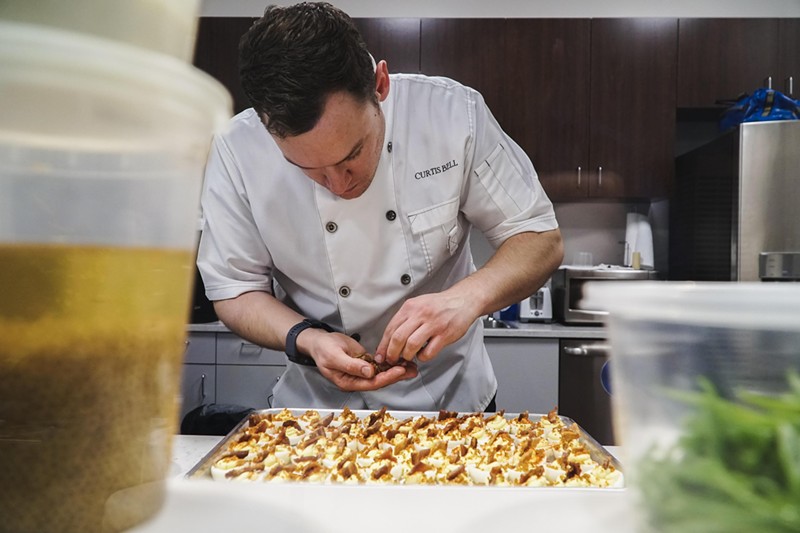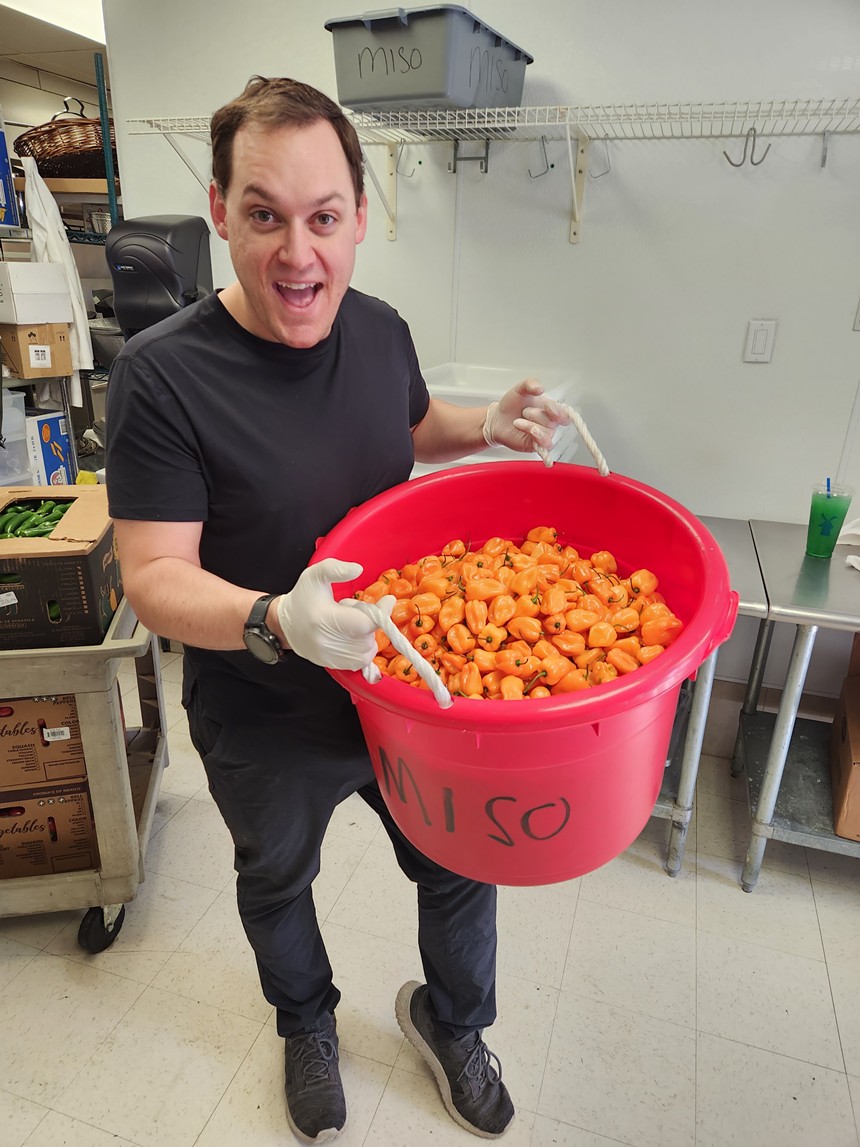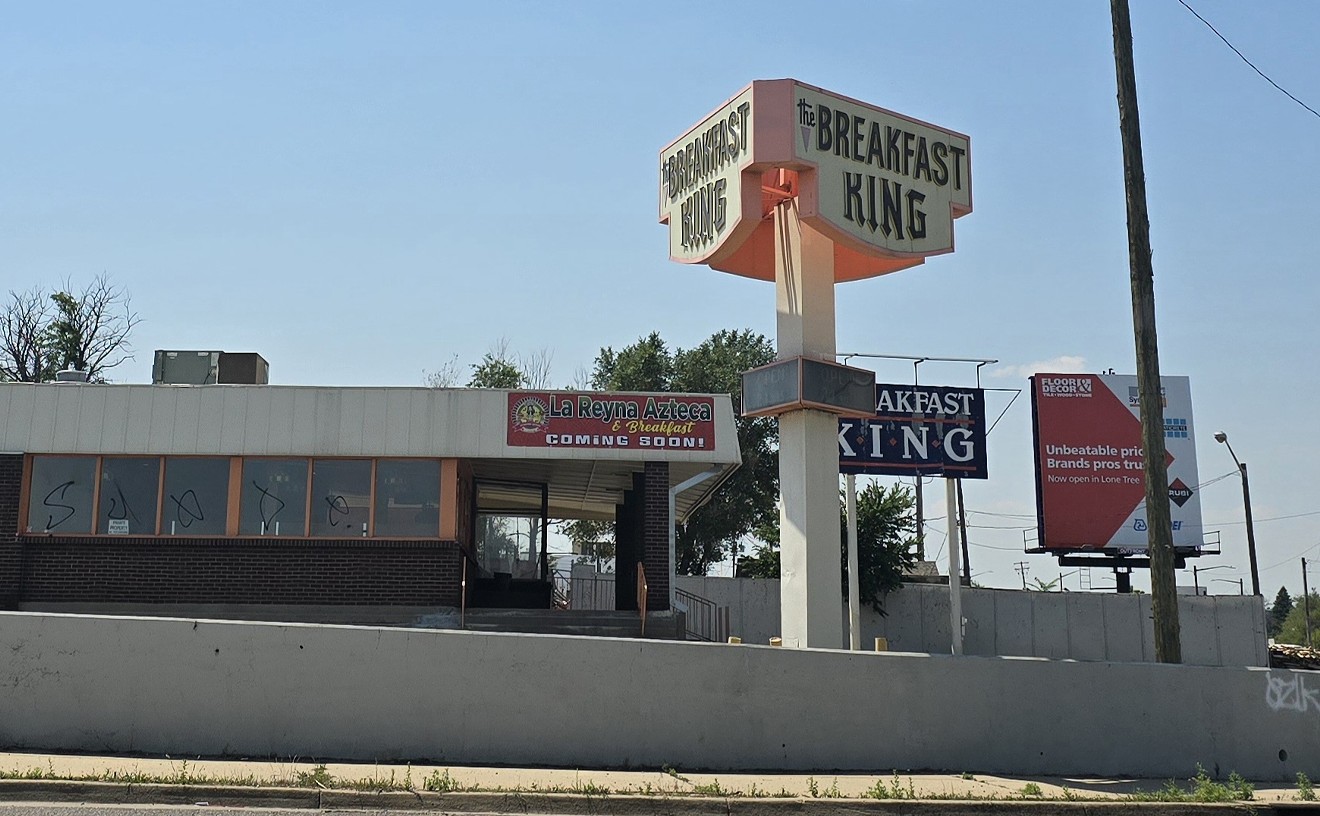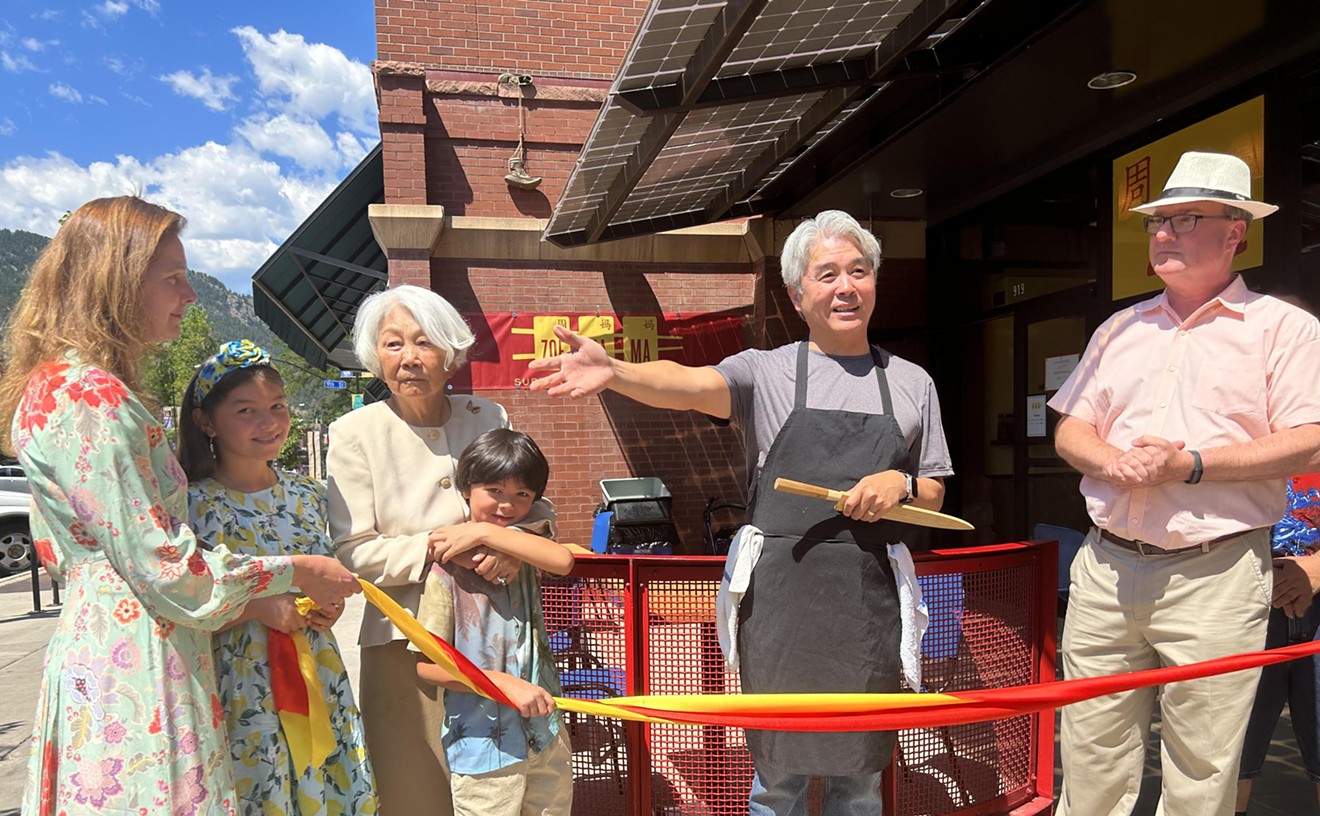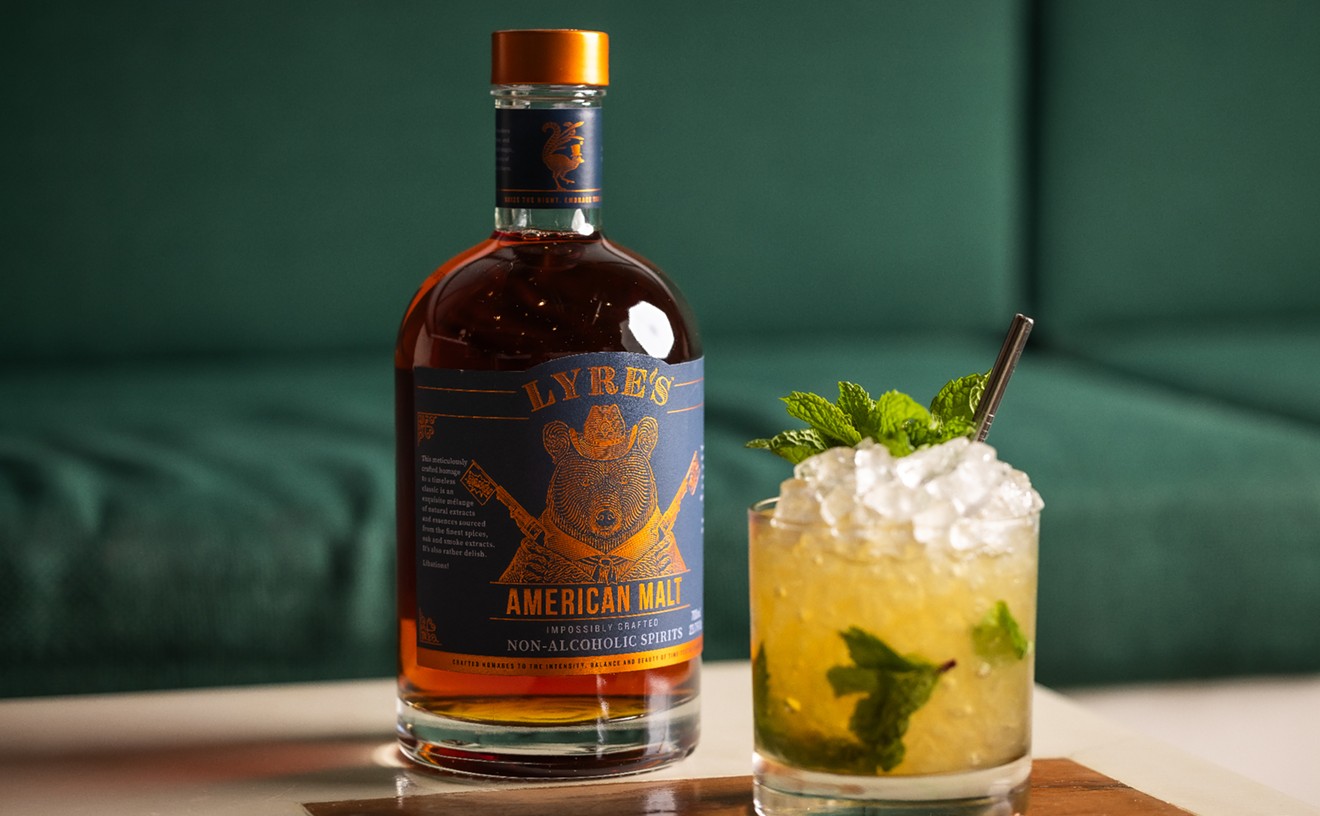Chef Curtis Bell is responsible for this top athlete’s meals.
Born and raised in Denver, Bell grew up in Lakewood and attended the Culinary Institute of America in New York City. After graduation, he came back and spent a few years working in restaurants, but by age 21, he was burned out. "It only took a few management positions to realize that it’s just a really difficult, and often unhealthy, environment to be in," Bell says. Then one of his former bosses, restaurateur Kevin Taylor, connected him with a wealthy family looking for a private chef.
“For me, it was the ability to be my own boss,” Bell says of the transition between cooking on the line versus for a family. “There’s just less overall stress, there’s not like a hundred tickets coming in. ... You’re only dealing with one meal at a time, one individual or family at a time.” It’s been fifteen years, and Bell still cooks for the family, though less frequently.
In 2017, Bell found his career in flux when the family's patriarch passed away and that client scaled back the chef's obligations.When he saw a Facebook post by a chef friend about a professional athlete looking for a private chef, he responded. After turning in his résumé and letters of recommendation, he was invited to come to the client’s home to cook a test meal. It wasn’t until he walked through the front doors that he realized who the client was: Broncos linebacker Von Miller, the Super Bowl 50 MVP with eight Pro Bowl selections and current record-holder for the most sacks of any active player.
Bell made Miller a chicken chile Colorado served with avocado cream, salsa, beans and rice. “It was just a potently flavorful, colorful dish with a strong spice and Latin flavor, which I knew was sort of the flavor profile” that Miller favored, Bell recalls. But Miller’s reaction was muted, and Bell left the house unsure whether or not he got the job. A few days later, he got a call offering him the gig. He was Miller’s full-time private chef.
Other than previous client obligations, Bell says he “was pretty much at [Miller's] house every other hour of the waking day. ... They like to [always] have somebody in the house because there are friends, family that come into town, and you might be feeding just the person or the whole house on a game day.
It was partially because of Miller that Bell started MisoHeat, a spicy miso chile paste all-purpose condiment. “I wanted to create this spicy condiment, and so I used all the hot peppers that I had in my fridge, which were all peppers that were left over from meals I’d made for [Miller],” Bell says. During the R&D phase, “I used Von as a taster when I was testing out my recipes.” Around 2020, MisoHeat was selling like hotcakes at farmers' markets, and after three full seasons with Miller, Bell decided it was time to go in another direction, one that would free up his schedule.
But then MacKinnon reached out to Bell on Instagram, and the chef just couldn’t resist the allure of getting to work with one of the all-time great hockey players. “He has a reputation for being very serious about his diet, which is appealing to me. ... Some of the Broncos players that I’d work with, they have nutritionists and they want to focus on their nutrition, but they’ll cheat. On their off days, [and especially since] they only have one game a week, they’ve got a lot more days between their games that they can maybe eat at Chick-fil-A,” Bell explains. “But Nate is so dialed into his diet.”
MacKinnon introduced Bell to teammate Gabriel Landeskog, who was also looking for a private chef.
Many private chefs are attached to wealthy families who can afford the luxury and prestige of having someone in their home cooking their meals. But for a top-performing athlete, a private chef is a necessity. To be at peak performance, they need someone who is 100 percent focused on nutrition so they can put their bodies through the physical demands of the job. Once he started working with pro athletes, Bell spent a lot more time sitting down with the team’s nutritionists and the athlete’s private nutritionists, and self-educating himself on macros, nutritional profiles and healthy diets.
For his clients, Bell’s primary focus is to feed them clean foods, free from additives or preservatives. He keeps their diets gluten-free, dairy-free and typically grain-free to lessen the potential for inflammation.
“Last year, I feel like the ingredient of the year for us was Japanese sweet potatoes,” Bell says. In addition to sweet and white potatoes, the menu usually consists of lean proteins and root vegetables in dishes such as pad thai with sweet potato noodles and MisoHeat; a dairy-free, gluten-free, grain-free mac and cheese; venison Bolognese; and roasted shawarma chicken with a tahini coconut amino glaze. During periods of injury recovery, Bell will ramp up the neuro-protective compounds and use more beets, turmeric and blueberries.
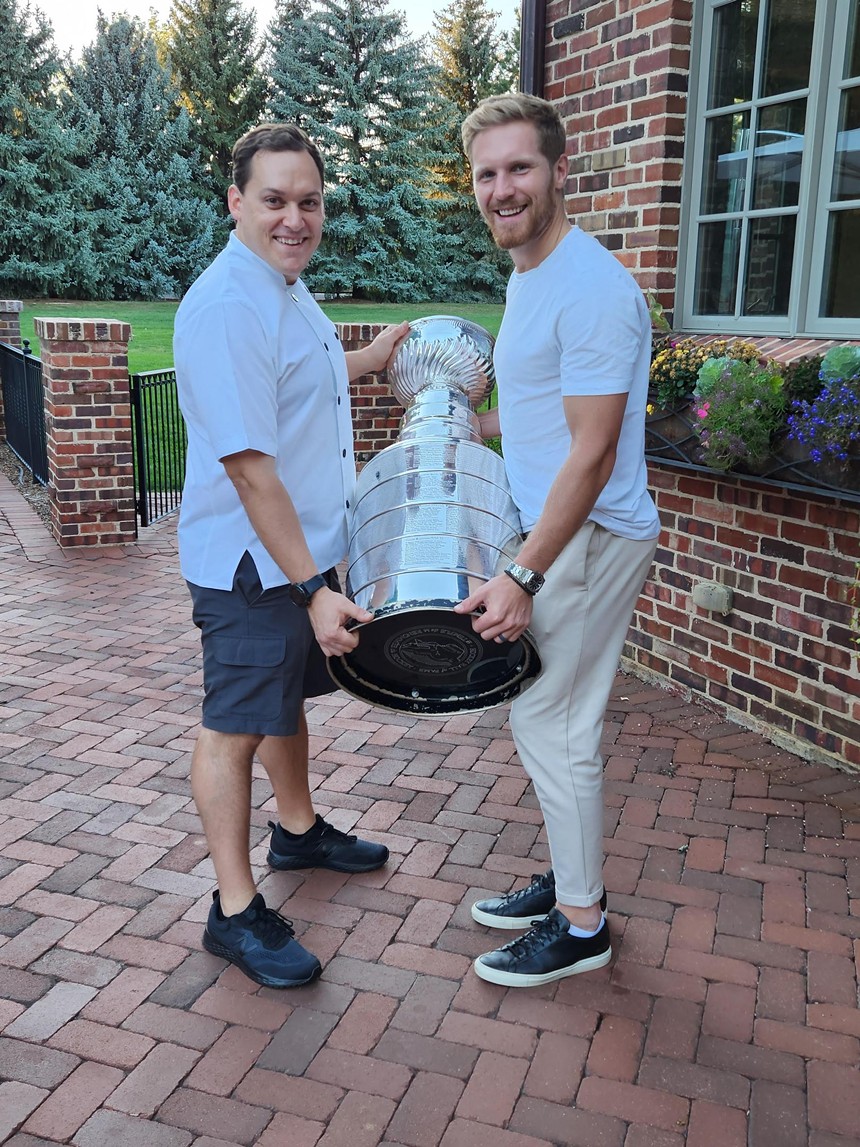
Curtis Bell with one of his pro athlete clients, Gabriel Landeskog, holding the Stanley Cup.
Curtis Bell
Athletes often have a superstition around their pre-game meals, and it becomes a ritual to have the same food every time. “The day of the game, it’s really, really lean. So hockey players, they eat a pre-game meal generally about six or seven hours before a game...and that meal generally is a specific amount of lean protein and carbohydrate, and usually the guys won’t want to throw vegetables into that mixture because it’s just unnecessary content in their stomachs,” Bell explains. “Post-game, you want quick-access carbohydrates. You want white potatoes, white rice, and you want good lean protein like chicken. ... You want to replenish your body as quickly as possible.”
Sadly, Bell says the popular post-game tradition of going to get pizza with the team and indulging in some heavy fats is pretty detrimental to an athlete’s recovery process.
And then there’s the X factor of needing to create a menu that the athlete will actually enjoy eating. Sometimes that means incorporating childhood favorites, like Bell did for Landeskog with Kalles Kaviar, a Swedish caviar spread that comes in a tube. Or it’s cooking up the elk and venison that Miller, an avid hunter, bagged on a hunting trip.
For all other ingredients, Bell spends a significant portion of his time sourcing and grocery shopping. “These clients, they want nothing but the best, and they don’t care what it costs,” he says. “So it affords a lot of creative freedom to find the best farmers, the best ranchers and the best products in the world.” And he’s spoiled for choice in Colorado, where he can shop at places like the Lazy Butcher in Evergreen and Tom's Seafood in Lakewood.
Bell also gets deer meat from Hawaiian company Maui Nui, bison from Montana and fresh Columbia River King salmon from Alaska, which, at $100 per pound, was the only ingredient that was expensive enough to make his client raise an eyebrow. It’s no surprise, then, that monthly grocery bills for these athletes average in the thousands. but “for these guys, it is not about the economical value as much as it is about the nutritional value, period," Bell notes. "They just want what is the best thing for their body."
It’s been an amazing and fulfilling journey for Bell, but he can’t see himself doing this forever. Like his athlete clients, his livelihood is tied to his physical well-being and ability to perform. But unlike his clients, he has no insurance or benefits, a lack of job security and definitely a lower paycheck.
“It’s nonstop, it’s go, go, go. I have a year-and-a-half-old car with 20,000 miles on it,” Bell says. “I’m not married and I don’t have kids, and I would attribute that partially to my career. ... I’ve been waiting for it to calm down a little bit to find more balance in my schedule, to be able to be that person for my partner and family.”
His current clients are most likely his last, he admits, though he plans to stay with them until they no longer need his services while continuing to build his MisoHeat business. The condiment will soon be available in Colorado Whole Foods store, and Bell hopes to eventually expand nationwide.

